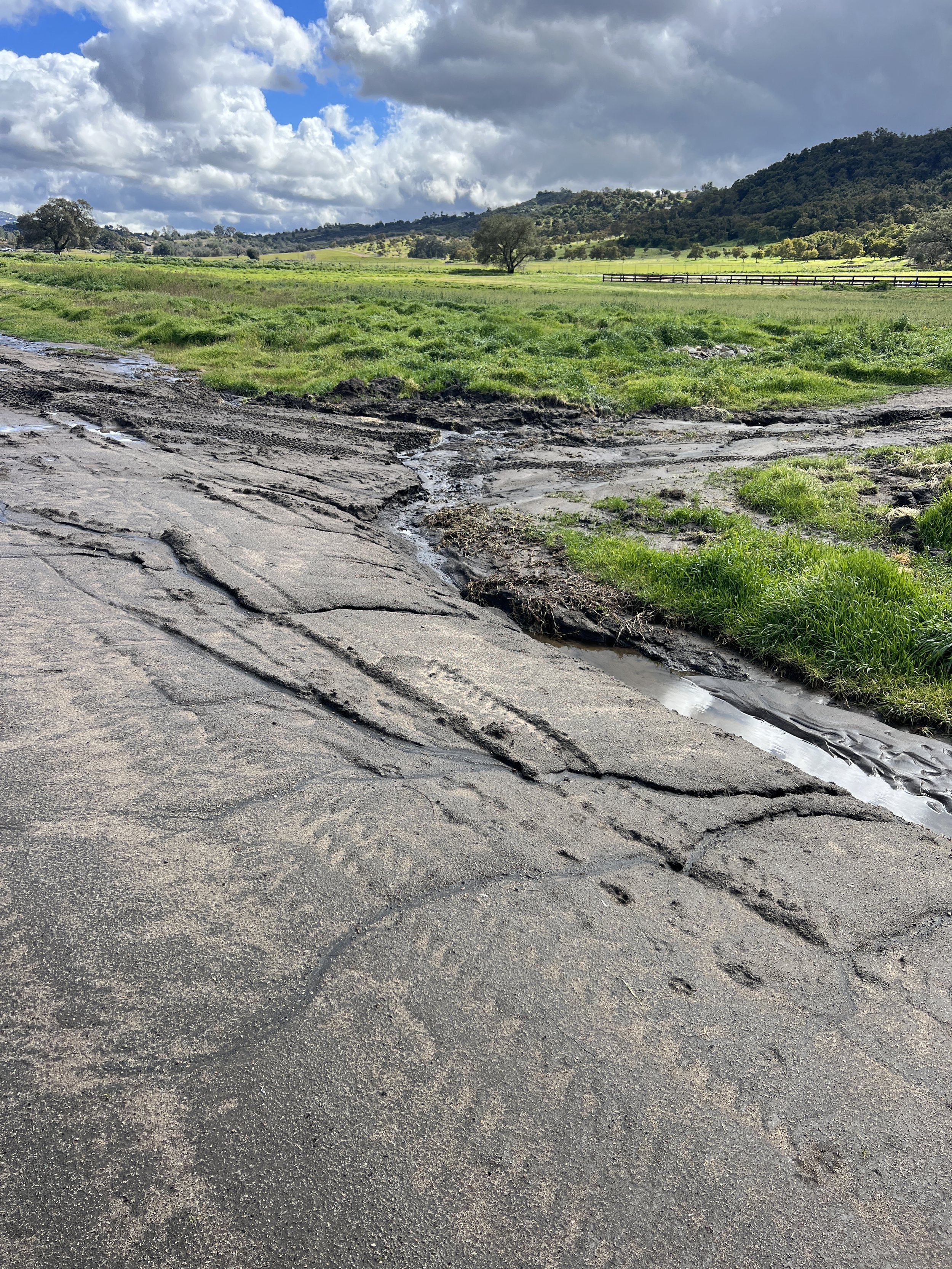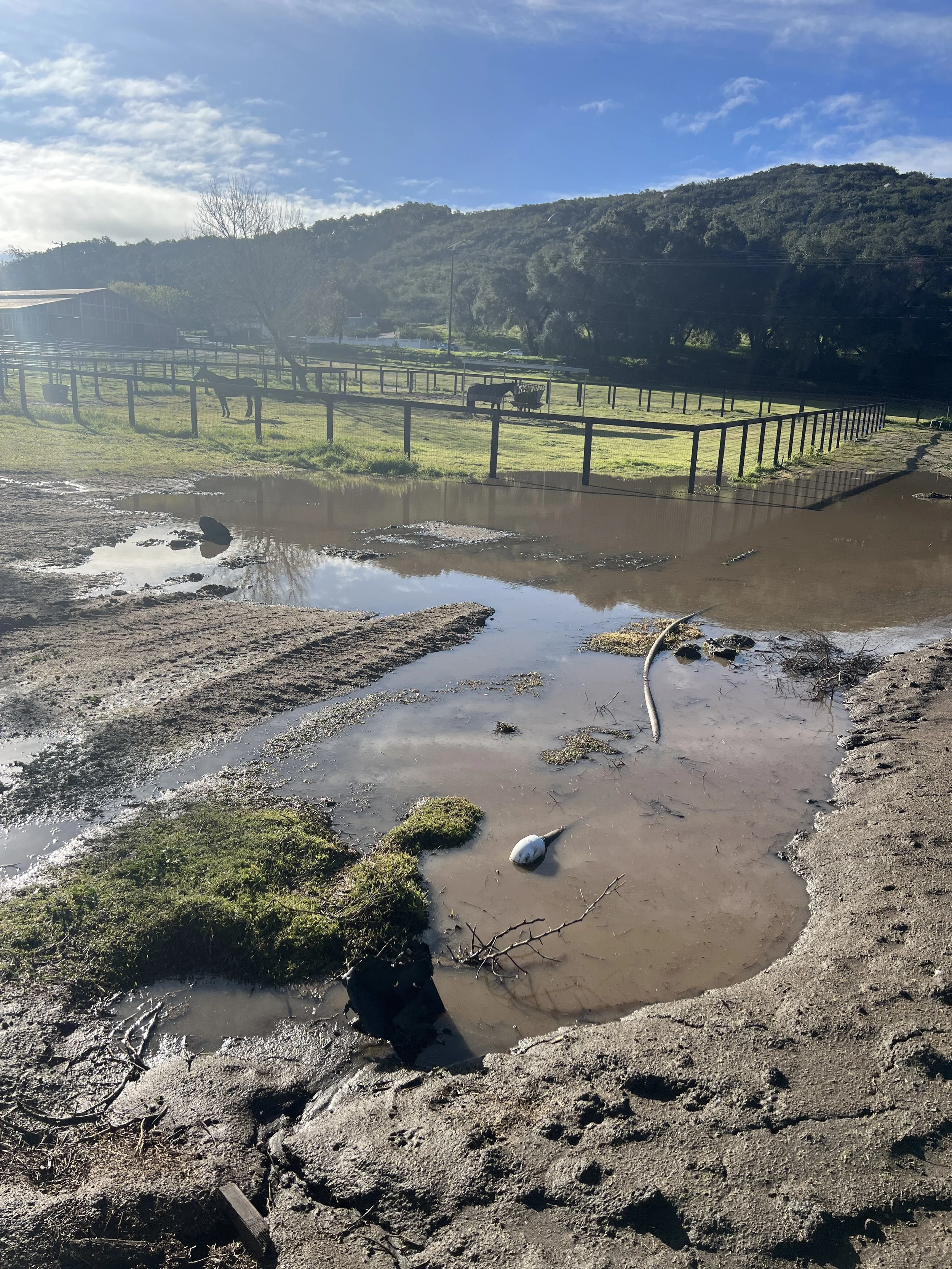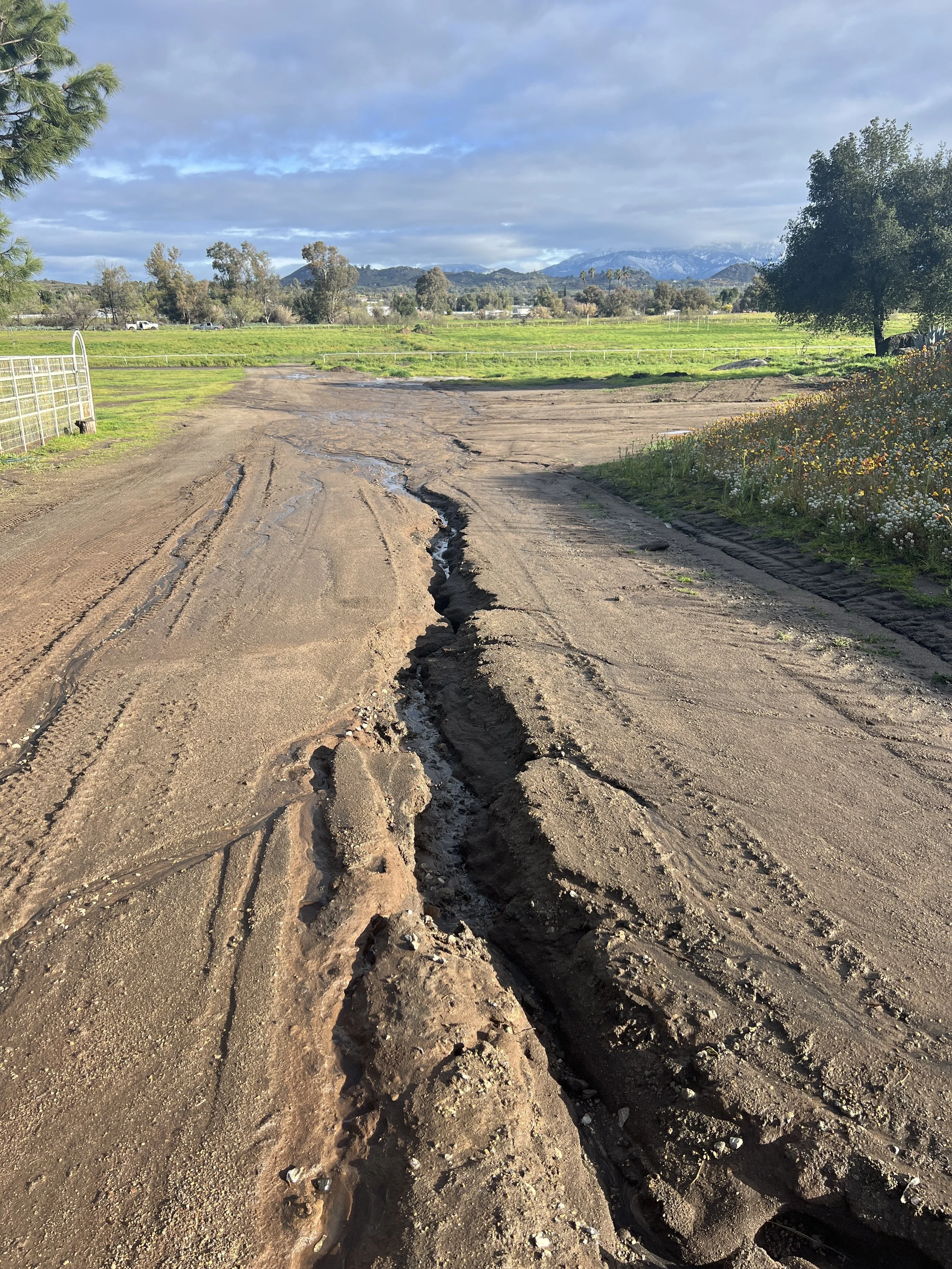3 Tips to manage heavy rain
We had historic rain this year in California, far exceeding our typical annual rainfall in just a few short weeks. If you’re dealing with this yourself, first of all, sorry, I feel your pain. And second, here are 3 tips I gleaned while managing our new farm in an abnormally rainy winter. Hopefully it helps more than those soggy rain boots that are somehow still soaking wet.
Understanding the land is understanding the dirt.
Don’t get bogged down by the details.
Take time to test each step.
Understanding the land is understanding the dirt.
Is it clay or sand? That’s the main question. You can determine this with a soil sample or a keen eye. We had samples analyzed prior to building and grading in different areas of the property and the main takeaway is that our soil is mostly sand. Sandy soil means water gets absorbed quickly, but it can’t hold much. Once it’s maxed out, the water and sand start flowing. This flow creates deep ruts throughout the property, running through roads and pastures.
Now that we understand the type of soil we have, we can better manage the run off. We designated certain areas for catch basins to create a clear point for the run off to stop since it won’t naturally be absorbed into the soil. The catch basins are about 7 ft deep and filled with rock so the water filters down and holds in these areas. We also have started looking at how the sand has carried to the lowest points and started to change the landscape and elevations. All good data points to build a proper, long-lasting drainage plan.
Don’t get bogged down by the details.
It’s easy to get overly concerned with certain problem areas. This or that muddy patch, one pasture that keeps flooding, etc. While all the problems that come along with abnormal, heavy rain are important (and annoying), it is always best to look at the whole picture: where the water is coming from in a broader scope. Inevitably you will need to look up, find where the water originates. Is it coming from the neighbors? Is it flowing uninhibited for hundreds of feet before it causes an issue? Where is the ultimate end goal to divert the flow? These questions will be invariably more helpful to answer instead of digging in on the smaller issues that come up day to day.
I found it helpful to draw a map to get an overall view of the way water flows. It allowed everyone to get a sense for where water was coming from and where it needed to go. Plus I’m always a fan of a visual to make things clear.
Take time to test each step.
Having a rough idea of a property wide drainage plan is one thing, making sure it works is another. At each new phase of improvements to the drainage, we waited for the next week of rain to test. it’s not until you are watching the water flow that you’ll truly know the extent of how the property handles things. We learned something new after each rain. And there’s no way to test except to just live it! In a lot of ways, this winter was a blessing for us (even though we were constantly soaked and muddy) because it gave us so much information. There were dry creek beds we thought would never see rain that were overflowing by the end of January.



